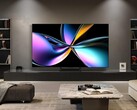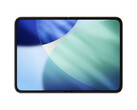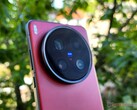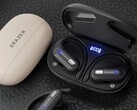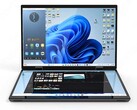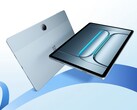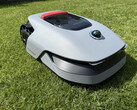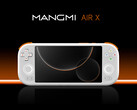Verdict
The Doogee Blade 20 Turbo offers a lot for under 300 euros: a nearly indestructible case, comparatively high performance that allows mostly smooth operation in everyday use, and a massive battery that can last up to two days with frequent use.
In return, you have to accept the increased weight and rather bulky design. The update situation is currently good, with security patches arriving every two months, but it is unclear how long this will continue. Speaker and camera performance is limited and should not be expected to deliver strong results.
The low screen resolution is noticeable to the naked eye in direct comparison, but the display is free of PWM flickering and therefore suitable for users sensitive to screen flicker. The storage is fast, a microSD slot is available, and Wi-Fi performance is reasonably quick.
Overall, this is a compelling smartphone that delivers a lot for the price. If you can accept the mentioned shortcomings, its temporary bestseller status is easy to understand.
Pros
Cons
Price and availability
The Doogee Blade 20 Turbo is available at amazon.de for around 270 euros at the time of testing.
Table of Contents
- Verdict
- Specifications
- Case and equipment - bulky and sturdy
- Communication and operation - Doogee phone with fingerprint sensor
- Software and sustainability - update situation unclear
- Cameras - Still with 4K video recording
- Display - Low resolution, but no PWM
- Performance, emissions and battery life - plenty of power for the Doogee phone
- Notebookcheck overall rating
- Comparison of possible alternatives
Specifications
Case and equipment - bulky and sturdy
If you are looking for a sturdy smartphone, the Doogee Blade 20 Turbo is a solid option. The case makes this immediately clear: a thick frame, partially rubberized surfaces, and a depth of 15.8 millimetres — by comparison, even the Samsung Galaxy XCover 7 appears slim.
Weighing 331 grams, the Doogee phone sits firmly in the hand. It can withstand dusty environments, immersion in water, and even high-pressure cleaning without damage.
There is no support for eSIM, and the USB-C port is limited to USB 2.0 speeds. However, NFC is included for functions such as contactless payments.
| SD Card Reader - average JPG Copy Test (av. of 3 runs) | |
| Oukitel WP35 (Angelbird V60) | |
| Cubot KingKong AX (Angelbird V60) | |
| Doogee Blade 20 Turbo (Angelbird V60) | |
| Samsung Galaxy XCover 7 (Angelbird V60) | |
| Average of class Smartphone (5.72 - 58.9, n=68, last 2 years) | |
Cross Platform Disk Test (CPDT)
Communication and operation - Doogee phone with fingerprint sensor
The Doogee Blade 20 Turbo supports 5G and includes sufficient frequency bands for use across Europe. However, for international travel, it is advisable to check whether local networks are fully compatible.
Wi-Fi 6 is supported, though access to the less commonly used 6 GHz band is not available. Transfer speeds are generally high, but occasional fluctuations can occur.
The touchscreen features a 90 Hz refresh rate, ensuring responsive input. A fingerprint sensor is integrated into the power button on the right side of the case; it functions reliably and unlocks the device with minimal delay. Face recognition is also available and provides fast unlocking.
| Networking | |
| Doogee Blade 20 Turbo | |
| iperf3 transmit AXE11000 | |
| iperf3 receive AXE11000 | |
| Oukitel WP35 | |
| iperf3 transmit AXE11000 | |
| iperf3 receive AXE11000 | |
| Cubot KingKong AX | |
| iperf3 transmit AXE11000 | |
| iperf3 receive AXE11000 | |
| Samsung Galaxy XCover 7 | |
| iperf3 transmit AXE11000 | |
| iperf3 receive AXE11000 | |
| Average 802.11 a/b/g/n/ac/ax | |
| iperf3 transmit AXE11000 | |
| iperf3 receive AXE11000 | |
| Average of class Smartphone | |
| iperf3 transmit AXE11000 | |
| iperf3 receive AXE11000 | |
Software and sustainability - update situation unclear
The operating system is based on Android 15 with minimal modifications. The manufacturer does not specify how long the device will receive updates. During testing, an update to the May 2025 security patch was available, which was still reasonably current at the time.
However, the phone lacks Widevine L1 certification, so streaming content from many providers is limited to SD quality.
There are no visible or officially stated efforts regarding sustainability.
Cameras - Still with 4K video recording
A 50-megapixel main camera is positioned on the back. It is capable of recording 4K video, which delivers fairly decent results. However, autofocus tends to be somewhat slow and imprecise. Images could benefit from brighter exposure, and noise becomes noticeable quickly. In very low light, both brightness and dynamic range are significantly limited.
The secondary rear camera is a macro lens with a low resolution of just 2 megapixels.
On the front, a 16-megapixel sensor handles selfies. Image quality is generally good, and the camera manages high brightness contrast surprisingly well.
Image comparison
Choose a scene and navigate within the first image. One click changes the position on touchscreens. One click on the zoomed-in image opens the original in a new window. The first image shows the scaled photograph of the test device.
Hauptkamera PflanzeHauptkamera UmgebungHauptkamera Low Light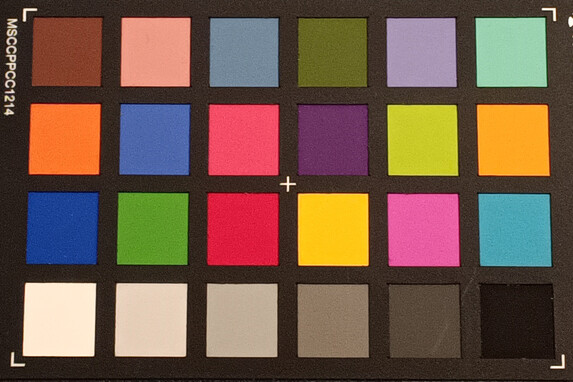

Display - Low resolution, but no PWM
Unfortunately, the display has a relatively low resolution of 1612x720px and does not perform particularly well in terms of brightness. We measured an average of 441cd/m² at maximum brightness with the ambient light sensor active. A noticeable blue tint is also present in the image.
On the plus side, the screen operates without PWM flickering at lower brightness levels, making it suitable for users sensitive to flicker.
| |||||||||||||||||||||||||
Brightness Distribution: 88 %
Center on Battery: 475 cd/m²
Contrast: 1105:1 (Black: 0.43 cd/m²)
ΔE ColorChecker Calman: 7.83 | ∀{0.5-29.43 Ø4.78}
ΔE Greyscale Calman: 8.3 | ∀{0.09-98 Ø5}
89.1% sRGB (Calman 2D)
Gamma: 2.68
CCT: 8806 K
| Doogee Blade 20 Turbo IPS, 1612x720, 6.6" | Oukitel WP35 IPS, 2408x1080, 6.6" | Cubot KingKong AX IPS, 2408x1080, 6.6" | Samsung Galaxy XCover 7 PLS, 2408x1080, 6.6" | |
|---|---|---|---|---|
| Screen | 5% | 6% | 14% | |
| Brightness middle (cd/m²) | 475 | 552 16% | 553 16% | 600 26% |
| Brightness (cd/m²) | 441 | 549 24% | 521 18% | 561 27% |
| Brightness Distribution (%) | 88 | 94 7% | 86 -2% | 89 1% |
| Black Level * (cd/m²) | 0.43 | 0.42 2% | 0.5 -16% | 0.57 -33% |
| Contrast (:1) | 1105 | 1314 19% | 1106 0% | 1053 -5% |
| Colorchecker dE 2000 * | 7.83 | 7.22 8% | 7.18 8% | 5.07 35% |
| Colorchecker dE 2000 max. * | 11.09 | 13.09 -18% | 10.23 8% | 8.1 27% |
| Greyscale dE 2000 * | 8.3 | 10.1 -22% | 7.1 14% | 5.7 31% |
| Gamma | 2.68 82% | 1.785 123% | 2.291 96% | 2.249 98% |
| CCT | 8806 74% | 9036 72% | 8964 73% | 8162 80% |
* ... smaller is better
Screen Flickering / PWM (Pulse-Width Modulation)
| Screen flickering / PWM not detected | |||
In comparison: 53 % of all tested devices do not use PWM to dim the display. If PWM was detected, an average of 8142 (minimum: 5 - maximum: 343500) Hz was measured. | |||
Display Response Times
| ↔ Response Time Black to White | ||
|---|---|---|
| 17.6 ms ... rise ↗ and fall ↘ combined | ↗ 5 ms rise | |
| ↘ 12.6 ms fall | ||
| The screen shows good response rates in our tests, but may be too slow for competitive gamers. In comparison, all tested devices range from 0.1 (minimum) to 240 (maximum) ms. » 38 % of all devices are better. This means that the measured response time is better than the average of all tested devices (20.2 ms). | ||
| ↔ Response Time 50% Grey to 80% Grey | ||
| 39.7 ms ... rise ↗ and fall ↘ combined | ↗ 21.2 ms rise | |
| ↘ 18.5 ms fall | ||
| The screen shows slow response rates in our tests and will be unsatisfactory for gamers. In comparison, all tested devices range from 0.165 (minimum) to 636 (maximum) ms. » 60 % of all devices are better. This means that the measured response time is worse than the average of all tested devices (31.7 ms). | ||
Performance, emissions and battery life - plenty of power for the Doogee phone
With the MediaTek Dimensity 7050, the Doogee Blade 20 Turbo clearly outperforms most competitors in its price range. It delivers solid mid-range performance in everyday use, allowing for smooth system navigation and stutter-free handling of standard tasks. The relatively low screen resolution also contributes to consistently fluid operation.
The case heats up noticeably under sustained load, but not to critical levels. In 3DMark stress testing, no significant throttling was observed even after multiple benchmark runs.
Looking at the speaker's sound curve, it is noticeably treble-heavy — a trait that is confirmed in real-world use. This benefits speech clarity, but music and movie audio sound thin and lack depth. Bluetooth audio playback supports a wide range of codecs, including less common formats such as Opus.
With its 10,300mAh battery, the Doogee Blade 20 Turbo performs well in our Wi-Fi battery test, achieving a runtime of 23:17 hours. This easily covers a full day of heavy use and often stretches to two days without charging. The device supports up to 33W charging, but a full charge can still take well over 3 hours.
| Geekbench AI | |
| Single Precision NPU 1.5 | |
| Average of class Smartphone (80 - 5210, n=51, last 2 years) | |
| Doogee Blade 20 Turbo | |
| Average MediaTek Dimensity 7050 (528 - 531, n=2) | |
| Half Precision NPU 1.5 | |
| Average of class Smartphone (80 - 36297, n=51, last 2 years) | |
| Doogee Blade 20 Turbo | |
| Average MediaTek Dimensity 7050 (561 - 579, n=2) | |
| Quantized NPU 1.5 | |
| Average of class Smartphone (133 - 49889, n=51, last 2 years) | |
| Doogee Blade 20 Turbo | |
| Average MediaTek Dimensity 7050 (1645 - 1704, n=2) | |
| Doogee Blade 20 Turbo | Oukitel WP35 | Cubot KingKong AX | Samsung Galaxy XCover 7 | Average 256 GB UFS 3.1 Flash | Average of class Smartphone | |
|---|---|---|---|---|---|---|
| AndroBench 3-5 | -84% | 33% | 18% | 83% | 109% | |
| Sequential Read 256KB (MB/s) | 1873.2 | 292 -84% | 1000.7 -47% | 488.2 -74% | 1757 ? -6% | 2227 ? 19% |
| Sequential Write 256KB (MB/s) | 1250.2 | 149.5 -88% | 915.2 -27% | 501 -60% | 1204 ? -4% | 1843 ? 47% |
| Random Read 4KB (MB/s) | 280.9 | 61.7 -78% | 230.6 -18% | 212 -25% | 287 ? 2% | 295 ? 5% |
| Random Write 4KB (MB/s) | 72.4 | 9.4 -87% | 233.2 222% | 240.2 232% | 318 ? 339% | 335 ? 363% |
(-) The maximum temperature on the upper side is 47.9 °C / 118 F, compared to the average of 35.2 °C / 95 F, ranging from 21.9 to 247 °C for the class Smartphone.
(-) The bottom heats up to a maximum of 45.4 °C / 114 F, compared to the average of 34 °C / 93 F
(+) In idle usage, the average temperature for the upper side is 29 °C / 84 F, compared to the device average of 32.9 °C / 91 F.
3DMark Steel Nomad Stress Test
| 3DMark | |
| Wild Life Stress Test Stability | |
| Samsung Galaxy XCover 7 | |
| Oukitel WP35 | |
| Doogee Blade 20 Turbo | |
| Cubot KingKong AX | |
| Wild Life Extreme Stress Test | |
| Samsung Galaxy XCover 7 | |
| Cubot KingKong AX | |
| Doogee Blade 20 Turbo | |
| Oukitel WP35 | |
| Steel Nomad Light Stress Test Stability | |
| Doogee Blade 20 Turbo | |
Doogee Blade 20 Turbo audio analysis
(+) | speakers can play relatively loud (86.9 dB)
Bass 100 - 315 Hz
(-) | nearly no bass - on average 24.9% lower than median
(±) | linearity of bass is average (10.4% delta to prev. frequency)
Mids 400 - 2000 Hz
(±) | higher mids - on average 9.8% higher than median
(±) | linearity of mids is average (9% delta to prev. frequency)
Highs 2 - 16 kHz
(±) | higher highs - on average 6% higher than median
(+) | highs are linear (6.5% delta to prev. frequency)
Overall 100 - 16.000 Hz
(±) | linearity of overall sound is average (28.4% difference to median)
Compared to same class
» 74% of all tested devices in this class were better, 5% similar, 22% worse
» The best had a delta of 11%, average was 35%, worst was 134%
Compared to all devices tested
» 85% of all tested devices were better, 3% similar, 12% worse
» The best had a delta of 4%, average was 24%, worst was 134%
Samsung Galaxy XCover 7 audio analysis
(+) | speakers can play relatively loud (84.3 dB)
Bass 100 - 315 Hz
(-) | nearly no bass - on average 25.6% lower than median
(±) | linearity of bass is average (10.8% delta to prev. frequency)
Mids 400 - 2000 Hz
(±) | higher mids - on average 6.3% higher than median
(±) | linearity of mids is average (7% delta to prev. frequency)
Highs 2 - 16 kHz
(±) | higher highs - on average 5.4% higher than median
(+) | highs are linear (6.1% delta to prev. frequency)
Overall 100 - 16.000 Hz
(±) | linearity of overall sound is average (20.9% difference to median)
Compared to same class
» 38% of all tested devices in this class were better, 8% similar, 54% worse
» The best had a delta of 11%, average was 35%, worst was 134%
Compared to all devices tested
» 56% of all tested devices were better, 8% similar, 37% worse
» The best had a delta of 4%, average was 24%, worst was 134%
| Doogee Blade 20 Turbo 10300 mAh | Oukitel WP35 11000 mAh | Cubot KingKong AX 5100 mAh | Samsung Galaxy XCover 7 4050 mAh | |
|---|---|---|---|---|
| Battery runtime | 19% | -24% | -42% | |
| WiFi v1.3 (h) | 23.3 | 27.7 19% | 17.6 -24% | 13.4 -42% |
| Reader / Idle (h) | 23.4 | |||
| H.264 (h) | 14.4 | |||
| Load (h) | 4.7 |
Notebookcheck overall rating
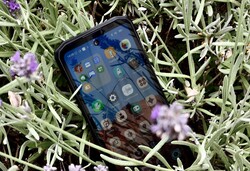
If you can accept the weight and bulky dimensions, the Doogee Blade 20 Turbo is a powerful and reliable smartphone.
Doogee Blade 20 Turbo
- 07/13/2025 v8
Florian Schmitt
Comparison of possible alternatives
Image | Model / Review | Price | Weight | Drive | Display |
|---|---|---|---|---|---|
| Doogee Blade 20 Turbo MediaTek Dimensity 7050 ⎘ ARM Mali-G68 MP4 ⎘ 8 GB Memory, 256 GB | Amazon: $259.99 List Price: 379€ | 331 g | 256 GB UFS 3.1 Flash | 6.60" 1612x720 267 PPI IPS | |
| Oukitel WP35 MediaTek Dimensity 6100+ ⎘ ARM Mali-G57 MP2 ⎘ 8 GB Memory, 256 GB eMMC | Amazon: 1. $37.88 SiuVorZhi LCD Display Compat... 2. $4.99 Mr.Shield Screen Protector c... 3. $38.99 SECRETIGER LCD Screen Displa... List Price: 285€ | 360 g | 256 GB eMMC 5.1 Flash | 6.60" 2408x1080 400 PPI IPS | |
| Cubot KingKong AX Mediatek Helio G99 ⎘ ARM Mali-G57 MP2 ⎘ 12 GB Memory, 256 GB | Amazon: 1. $33.62 LCD Touch Screen for Cubot K... 2. $41.50 for Cubot Kingkong 9 Screen ... 3. $2.77 Mr.Shield Screen Protector c... List Price: 260€ | 296 g | 256 GB UFS 3.0 Flash | 6.58" 2408x1080 401 PPI IPS | |
| Samsung Galaxy XCover 7 MediaTek Dimensity 6100+ ⎘ ARM Mali-G57 MP2 ⎘ 6 GB Memory, 128 GB UFS 2.1 | Amazon: 1. $6.98 3 Pack Tempered Glass Screen... 2. $7.99 Suttkue for Samsung Galaxy X... 3. $314.95 SAMSUNG Galaxy XCover6 Pro 5... List Price: 359€ | 240 g | 128 GB UFS 2.1 Flash | 6.60" 2408x1080 400 PPI PLS |
Transparency
The selection of devices to be reviewed is made by our editorial team. The test sample was freely purchased by the author at his/her own expense. The lender had no influence on this review, nor did the manufacturer receive a copy of this review before publication. There was no obligation to publish this review. As an independent media company, Notebookcheck is not subjected to the authority of manufacturers, retailers or publishers.
This is how Notebookcheck is testing
Every year, Notebookcheck independently reviews hundreds of laptops and smartphones using standardized procedures to ensure that all results are comparable. We have continuously developed our test methods for around 20 years and set industry standards in the process. In our test labs, high-quality measuring equipment is utilized by experienced technicians and editors. These tests involve a multi-stage validation process. Our complex rating system is based on hundreds of well-founded measurements and benchmarks, which maintains objectivity. Further information on our test methods can be found here.




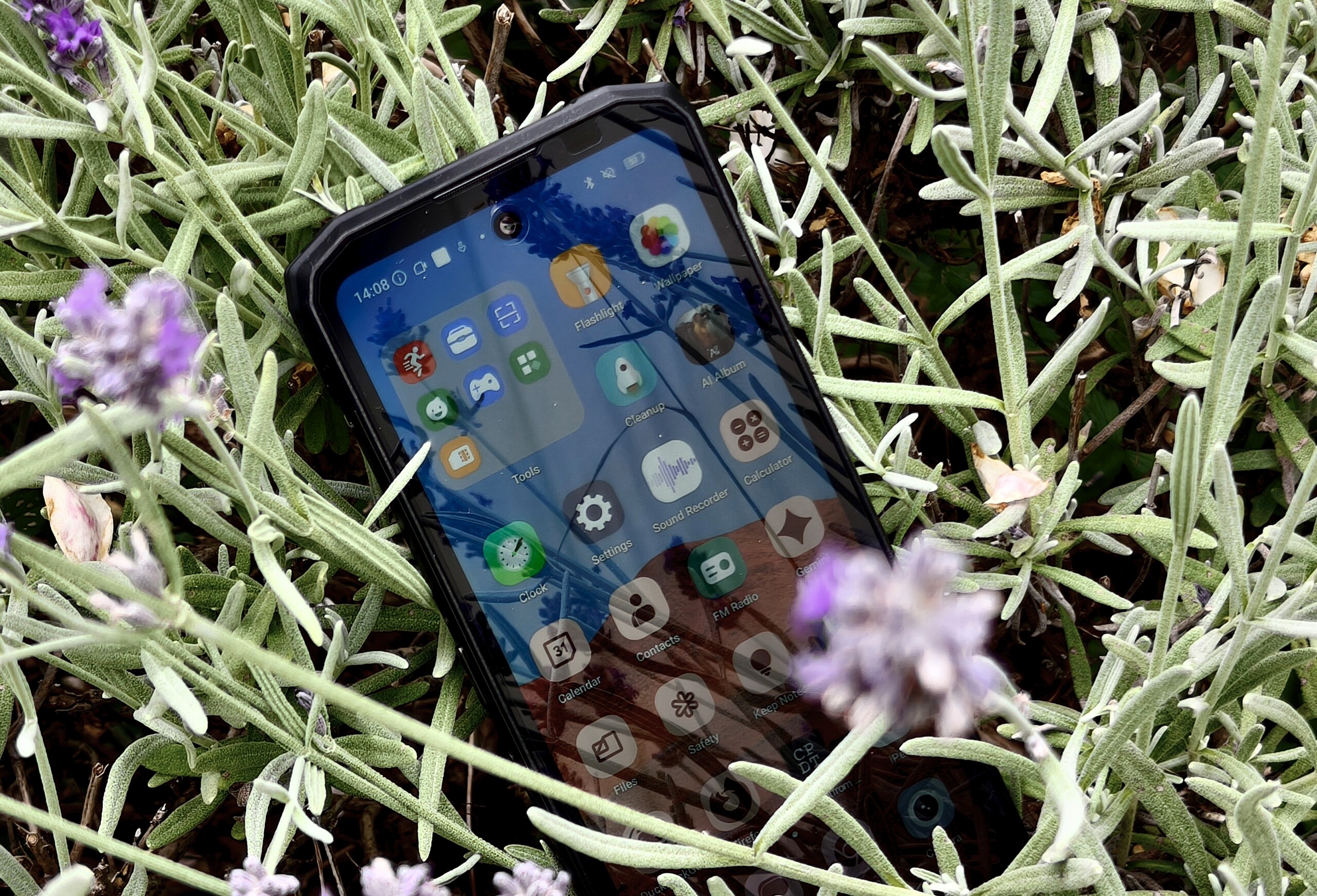



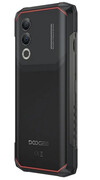
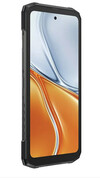
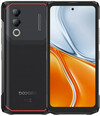


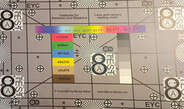



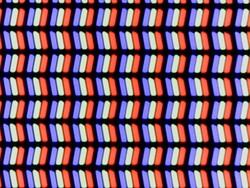
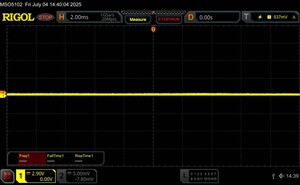
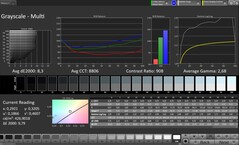


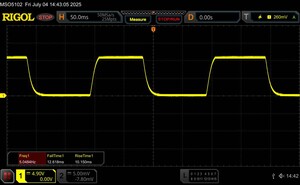
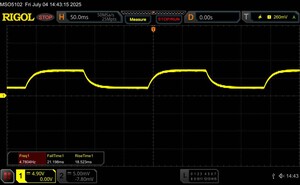
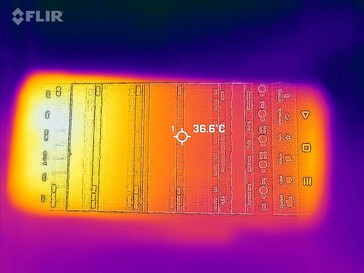
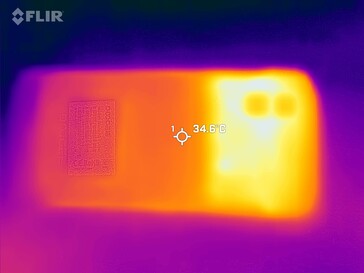
 Total Sustainability Score:
Total Sustainability Score: 




